The two destinations of this trip were scenic, neutral Switzerland, home of the UN and bastion of engineering prowess, and ancient, temperamental Italy, with its monuments, Catholic centralism and pickpockets. As the plane touched down on the snow-packed runway of Zurich International I began to have an idea of the cold. Apprehensive, maybe. My expectations of the weather were frightfully bolstered by pictures of frostbitten fingers caked with gangrene and bad movie stills of Batman and Robin. Fortunately (or otherwise), such fantasies collapse in upon themselves when faced by the mighty force of empirical reality.
This is Switzerland.
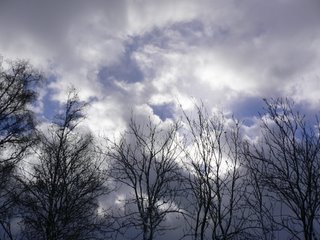
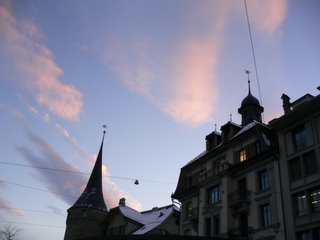
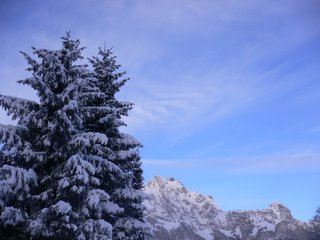
Well. The first was probably taken near the German border, and the third shows the Swiss Alps. The second picture is Lucerne, a Swiss city.
The view from the top of the Jungfraujoch, the Top of Europe.

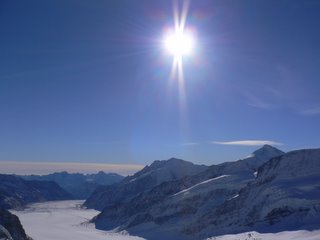
The Swiss are a truly pan-European society. The UN Headquarters are in Geneva, the primary language in the north is (Swiss) German, the primary language in the south is (Swiss) Italian, Swiss guards protect the Pope in the Vatican, and most of them speak English as a second language as well. Switzerland has retained its strictly neutral position since the 1500s, refraining from participation in most, if not all, wars, that could have potentially involved it. Combined with their traditional industrial, financial and technological niches as well as thir relatively stable economy and society, and one gets something close to what constitutes as an ideal a society as is possible given human nature. Of course, Switzerland is not without its faults. I am told that some sectors of Swiss society are given to racism, and the Swiss, of course, trap themselves within a cul-de-sac of sorts, achieving a sort of cultural stasis that is partly evidenced by the archaic nature of their Germanic dialect. But these are few and far between.
Another selling point of the Swiss, of course,would be its natural beauty. It is a place of lakes, glaciers, mountains, forests, the like. The primary terrain of this naturally mountainous country seems to be naturally craggy, which is obvious given the fact that most of Switzerland resides within the Alps. The compensation is revenue from winter sports and tourism, and the chance to enjoy mountains and clean air every morning.
On to Italy. This nation, this boot, is rather different from the serenity of Switzerland. Noisy, congested and a cradle of a beauty of a very different sort, and rather lacking in natural beauty of the igneous kind, this journey meanders through the old principalities of the fragmented city-states of the Italian peninsula, and harking back even further to the days of the Caesars and Marcus Aurelius. Milan, Verona, Venice, Florence, Rome. Cities full of an ancient splendour and a modern squalour, pickpockets and beggars at virtually every turn, bustling with lead-pumping cars, graffiti and the threat of a hidden Mafia member just around the corner (only, of course, in Sicily). Italian cities are a special breed. Every city resembles a dual-layered onion. The old city, in all its architectural and religous splendour, resides in the centre, and the modern morass sprawls around it. Even Venice is no exception, flooded as it is.
Italy; Milan and Venice.
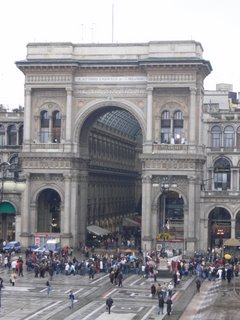


Rome was a disappointment of circumstance, not nature. Polluted as it was, it was still given to majesty. But the proceedings were devastated by a torrent of rain such as Rome has (by the words of the chagrined tour guide) rarely seen. To rub salt in the wound, the very next day, the end of the Rome tour, had absolutely beautiful weather.
The Vatican was interesting. One really gets the sense of the power vested into the papal authority, one that rules over hundreds of millions of individuals over many nationalities and cultures. Cultural wealth and the diversity of religous art and its monuments is diplayed in the most magnificent of fashions. Michelangelo's frescoes on the walls of the Sistine Chapel, his architectural masterpieces, St. Peter's Cathedral and Square, the paintings, mosaics, sculptures and structures spanning the length and breadth of artistic tastes of eras then and now - they are testament to the power of religion and its artifices. Rites and culture, atavistic and hallowed, juxtaposed against the modern chaos of today's frantic reality; that is Italy.
Unfortunately, the weather was so terrible that only a few pictures of Vatican City are available, and all are obscured by the elements. I rage against their caprice. Sadly, the Sistine Chapel does not allow for photos to be taken in its interior, because of a) typical Italian suspicion, and b) "precautions taken in the name of art".

Predictably, the Vatican is also crowded by tourists and pilgrims.
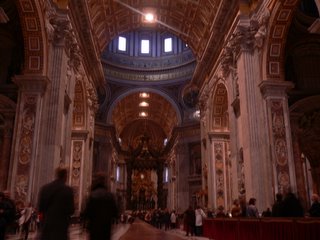

If I'm not wrong, that's St. Peter's. I'm not on a helicopter in that point in time so the more traditional aerial view isn't available.
Refer here for that view.
Rome was in crisis that day. Everyday there's another crisis. The crisis of the day was rain and traffic jams in rain. Another poignant visitation was to the city of Verona, of Shakesperean fame.
This is reputed to be Juliet's balcony. Not the Shakespearan Juliet (in the sense of the Shakespearan Richard III or the Shakespearan Julius Casear) but the one the play (and the one before it) was based on.
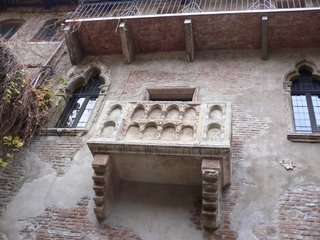
In my opinion, thoroughly unromantic. Because of the weather, maybe.
The Leaning Tower of Pisa and accompanying structures.


In Rome, there are two things outside the Vatican that are said to be, on any visit there, sinful to miss.

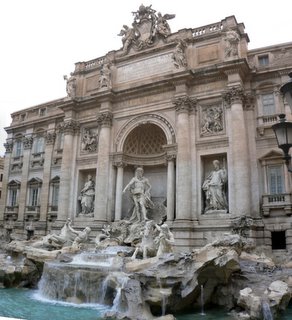
A more traditional view of the Colesseum was made impossible by the rain.
All in all, Switzerland and Italy showcase what is so iconic about Europe; it's laid-back attitude, fueled by the sheer weight of its history, its natural beauty, its grandeur and history and religon and art. And maybe food.
I shall top this off with a last photo of Napoleon with a bird sitting on him.



3 comments:
Remember that the Swiss created and enforced their neutral position by force of arms. The largest standing army of its time in Europe was used in the ultimate powerplay: we will be your arbiters, judges, mercenary captains, and bankers for the rest of history. And that has lasted almost 700 years. The unification of the Swiss cantons is a far far older event than the unification of Italy.
Aha. Interesting. But why did the Swiss have such an inclination, instead of going the traditional path of kingdoms of the time?
It's what happens when you have a confederacy rather than a nation-state or autarchy. To this day, cars bear the 'CH', and URLs the '.ch' suffix, of Switzerland - Confœderatio Helvetica.
The Swiss canton system (final unification in 1848 after 500 years!) is totally different from the enforced unity of Germany (by Bismarck finally, 1740s to 1871) and Italy (1815-1871, believe it or not, by Cavour of Sardinia). They obviously had much more time to work things out...
Post a Comment